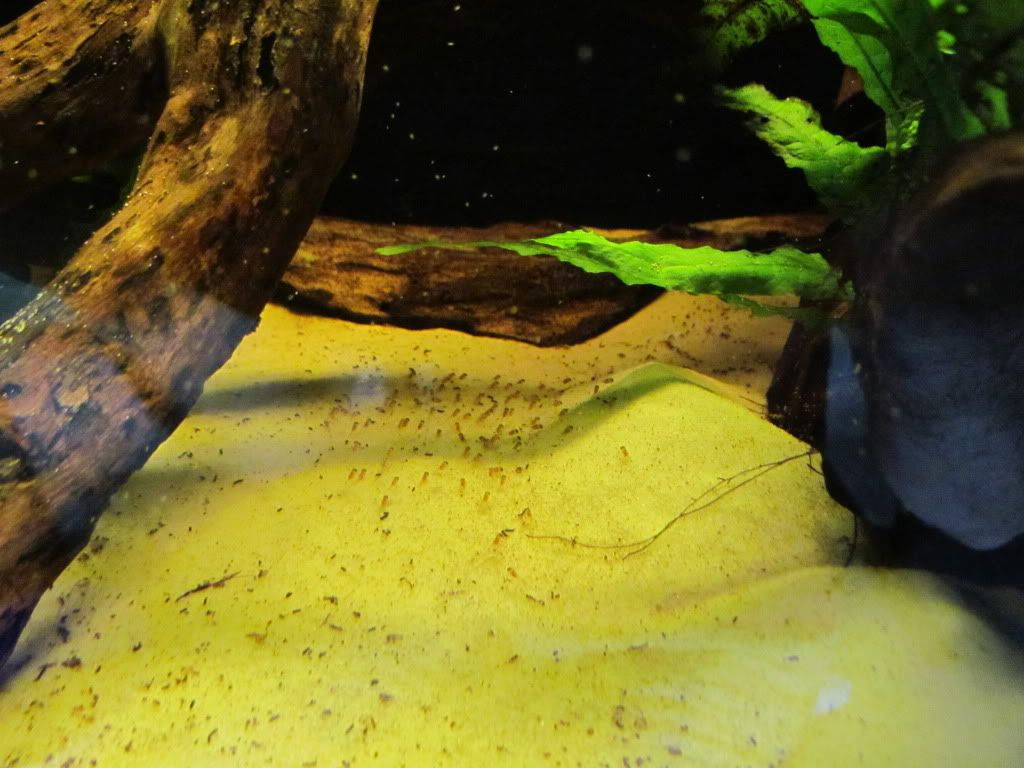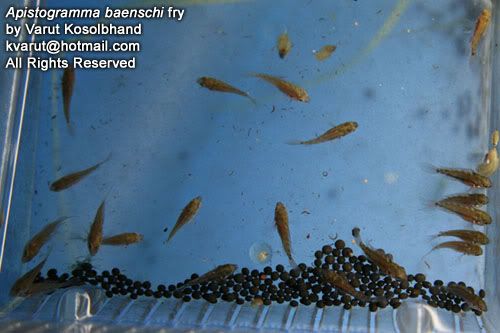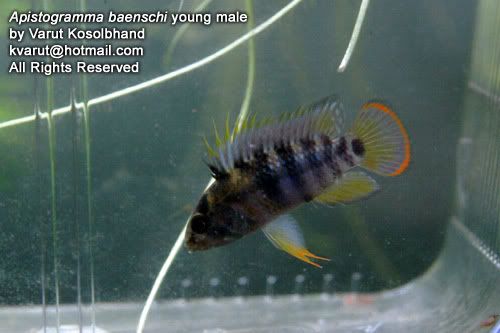- Messages
- 203
- Location
- Brisbane, Australia
G'day guys,
On Thursday I bought an Apistogramma Baenschi pair. On Monday evening they spawned. The female has dug out a cave under a mopani rootwood. In the photos below, you can see the pile of sand built up from her excavating. Unfortunately I can not get a good shot of the cave mouth due to the angle and the Java fern tied on to the mopani rootwood.
Female


Male




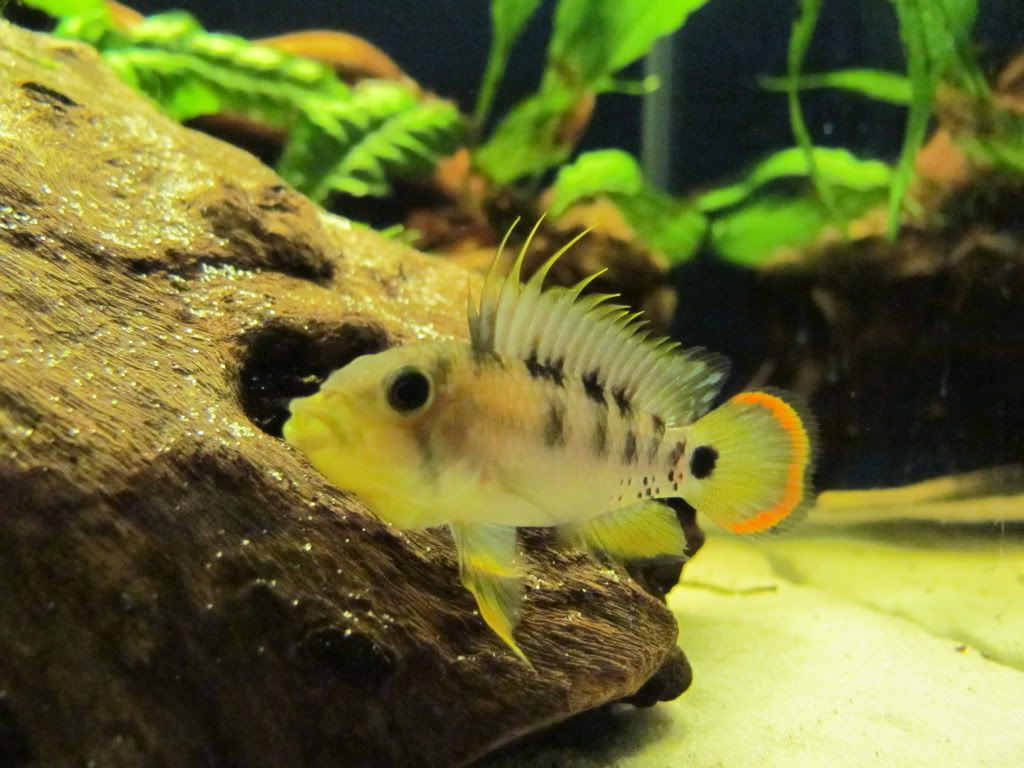
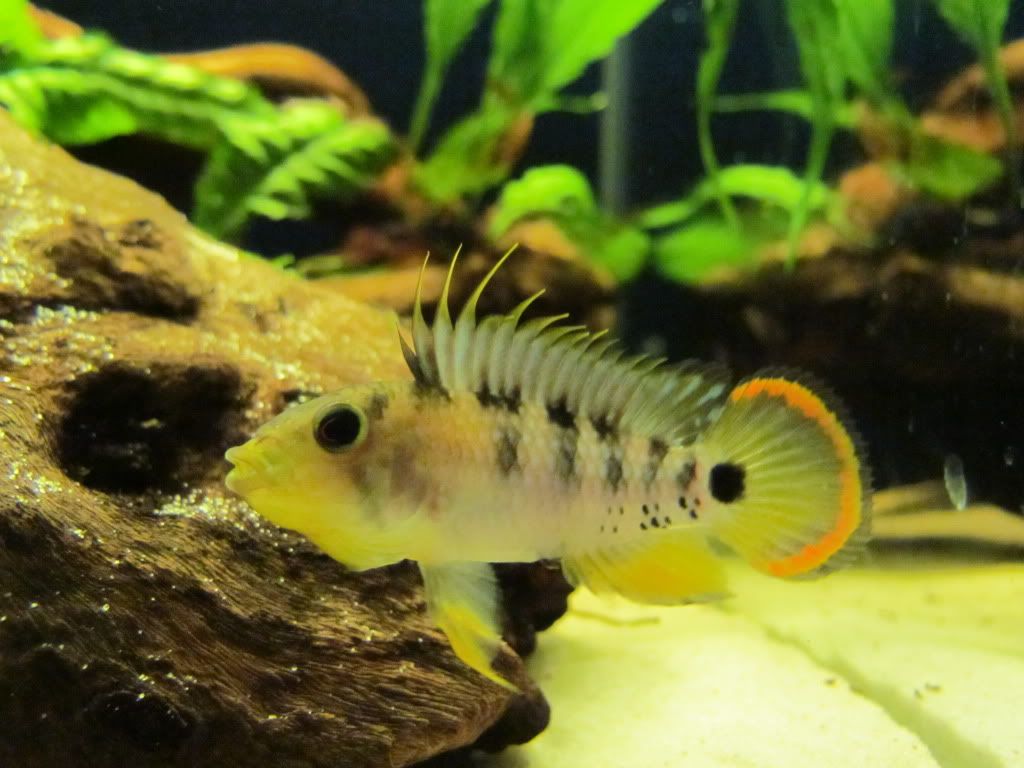
On Thursday I bought an Apistogramma Baenschi pair. On Monday evening they spawned. The female has dug out a cave under a mopani rootwood. In the photos below, you can see the pile of sand built up from her excavating. Unfortunately I can not get a good shot of the cave mouth due to the angle and the Java fern tied on to the mopani rootwood.
Female


Male








